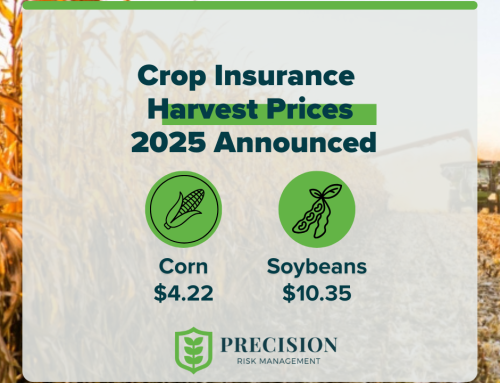Historic Precipitation Affects Your PRF Coverage
In the Midwest and Plains states, ranchers depend heavily on pasture and forage. Rainfall variability can quickly change your pasture’s productivity and your operation’s profitability. Pasture, Rangeland, and Forage (PRF) insurance helps manage the financial impacts of unpredictable precipitation using the benchmark of the Rainfall Index.
Here’s how this important index works and why understanding it can make your PRF policy even stronger.
What is the Rainfall Index?
The Rainfall Index is a systematic, data-driven measure of rainfall used to determine how precipitation levels in your specific area compare to historical averages.
Think of it as a rain gauge for your area, scientifically tracking actual rainfall levels within a precisely mapped geographic region.
This index is the backbone for PRF insurance and similar rainfall-indexed insurance policies.
How the Rainfall Index is Determined
Step 1: Data Collection
- NOAA operates a network of reliable, scientifically validated weather stations.
- Stations continually record rainfall data, tracking how much rain falls during specific intervals.
Step 2: Geographic Grid System
- The USDA Risk Management Agency divides the U.S. into standardized grids, each about 17 by 17 miles.
- Each grid cell has its own unique rainfall history and average, based on many years of historical rainfall data.
Step 3: Establishing Historical Rainfall Averages
- NOAA takes historical rainfall data for each grid to establish what’s considered “normal”.
- This historical benchmark is calculated from decades of rainfall records, creating a standard for comparison for policies.
Step 4: Selecting Your Coverage Intervals
- PRF insurance requires ranchers to select coverage intervals. These are two-month periods throughout the year.
- A minimum of two to a maximum of six intervals are selected
- You select intervals based on your ranch’s operational risks, forage growth cycles, and/or historical rainfall patterns.
How the Rainfall Index is used by PRF Insurance
PRF insurance uses the Rainfall Index to determine insurance loss payments:
- If actual rainfall during your selected intervals falls below the historical average rainfall, PRF triggers loss payments.
- Payments are larger the further rainfall has dropped below the historical average.
Example scenario using a single interval for illustration:
- Rancher Jon insures 800 acres for May-June.
- Historical rainfall for Sarah’s grid during this interval is 7 inches.
- NOAA measures only 4 inches this interval.
- The rainfall shortage triggers a PRF indemnity payment for Jon, offsetting her extra feed costs caused by reduced pasture growth.
This approach is used across many rainfall-based crop insurance plans, not just PRF. They utilize indexed rainfall measurements to transparently determine coverage outcomes.
Take Control of Your Ranch’s Risk
The Rainfall Index makes it easy to understand PRF insurance. Understanding rainfall uncertainty means better protection and smarter management for your ranch. Choosing the right interval periods for your operation’s risk management plan is essential.
Ready to find out how PRF insurance fits your ranch’s specific needs?
Contact PRM today to request your personalized PRF quote.




